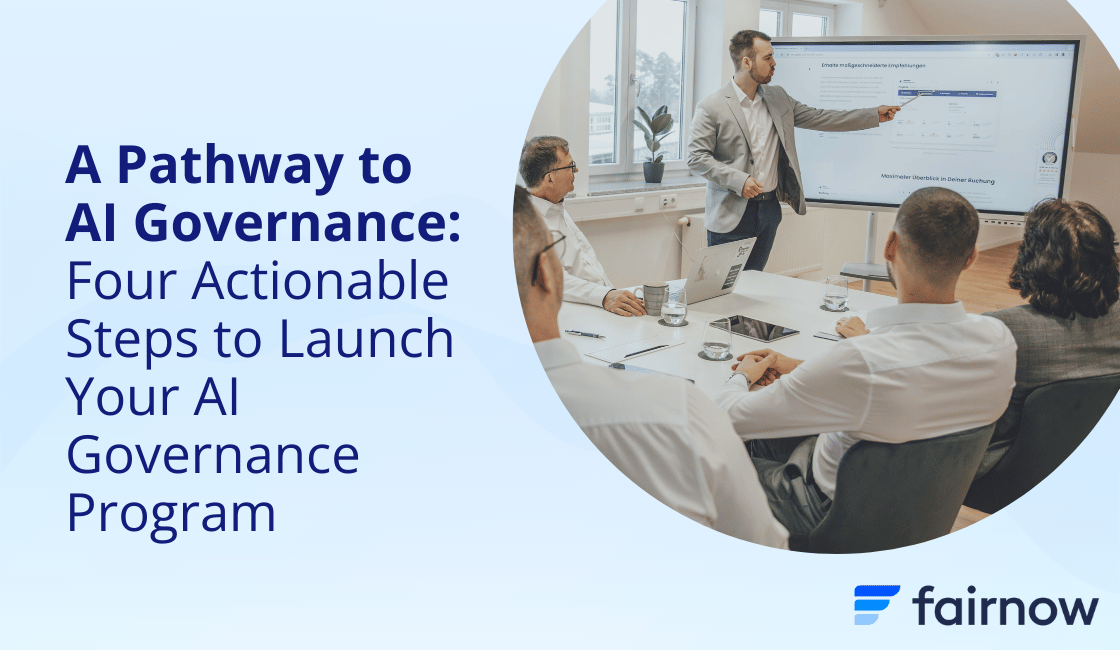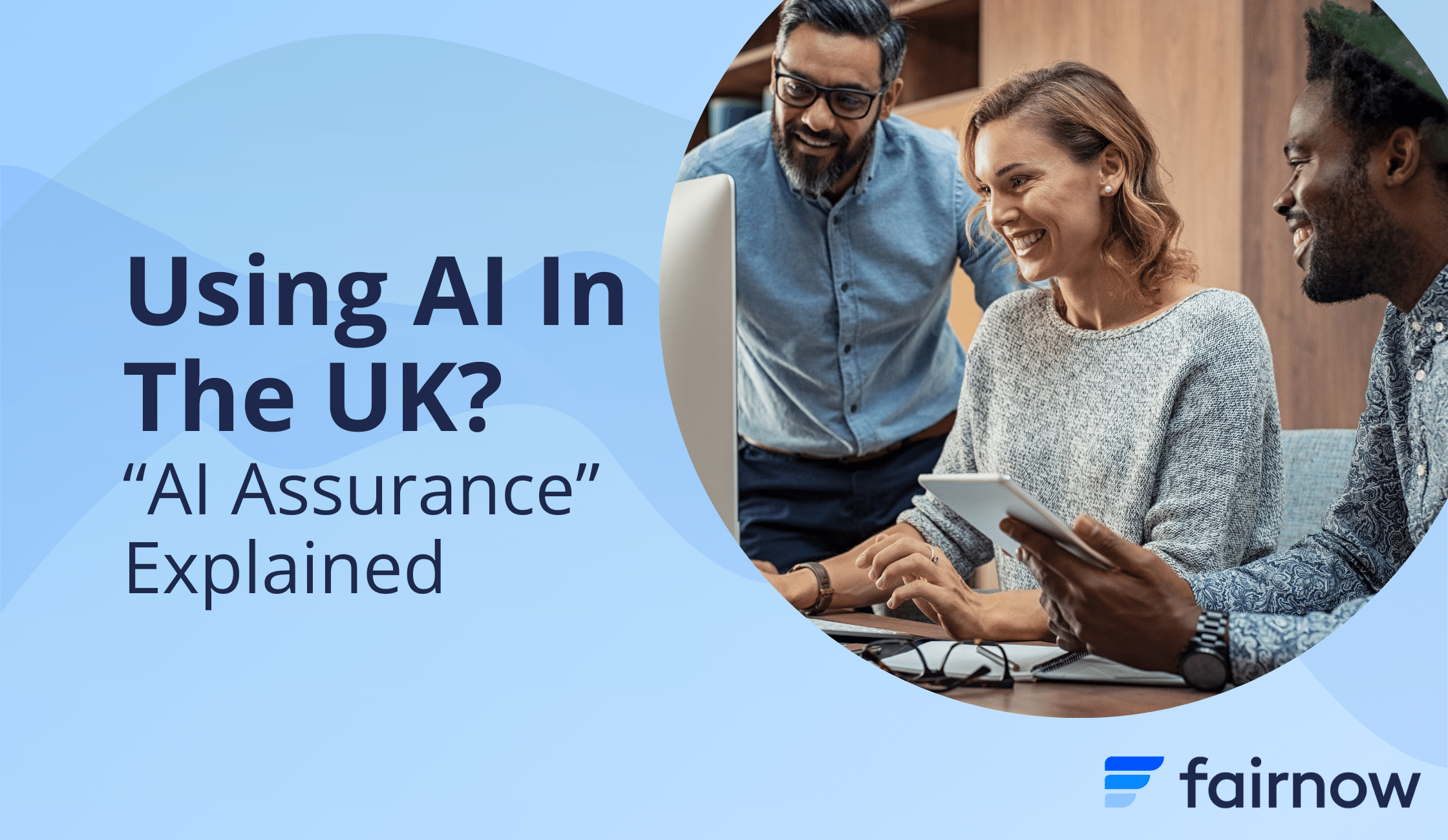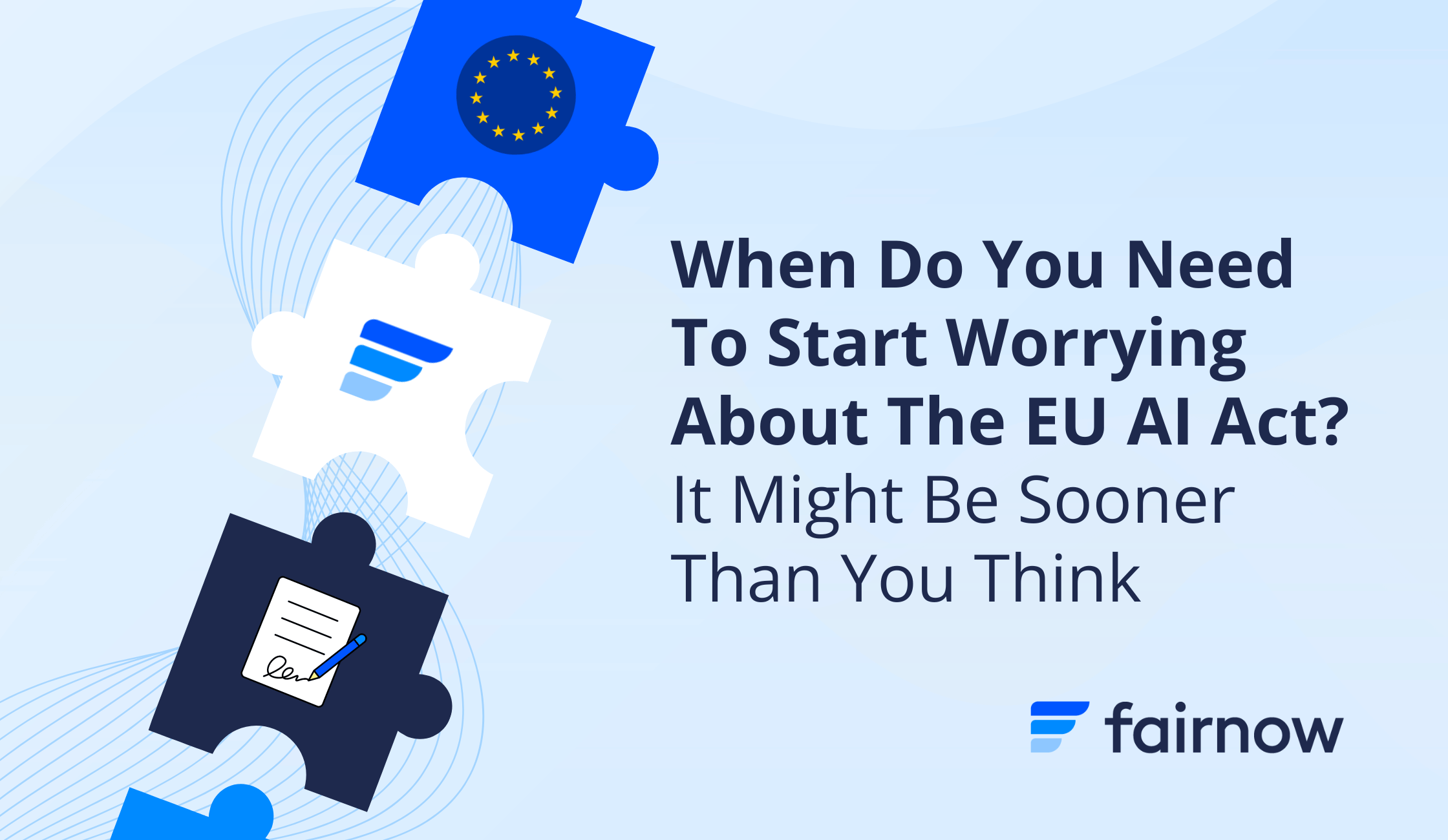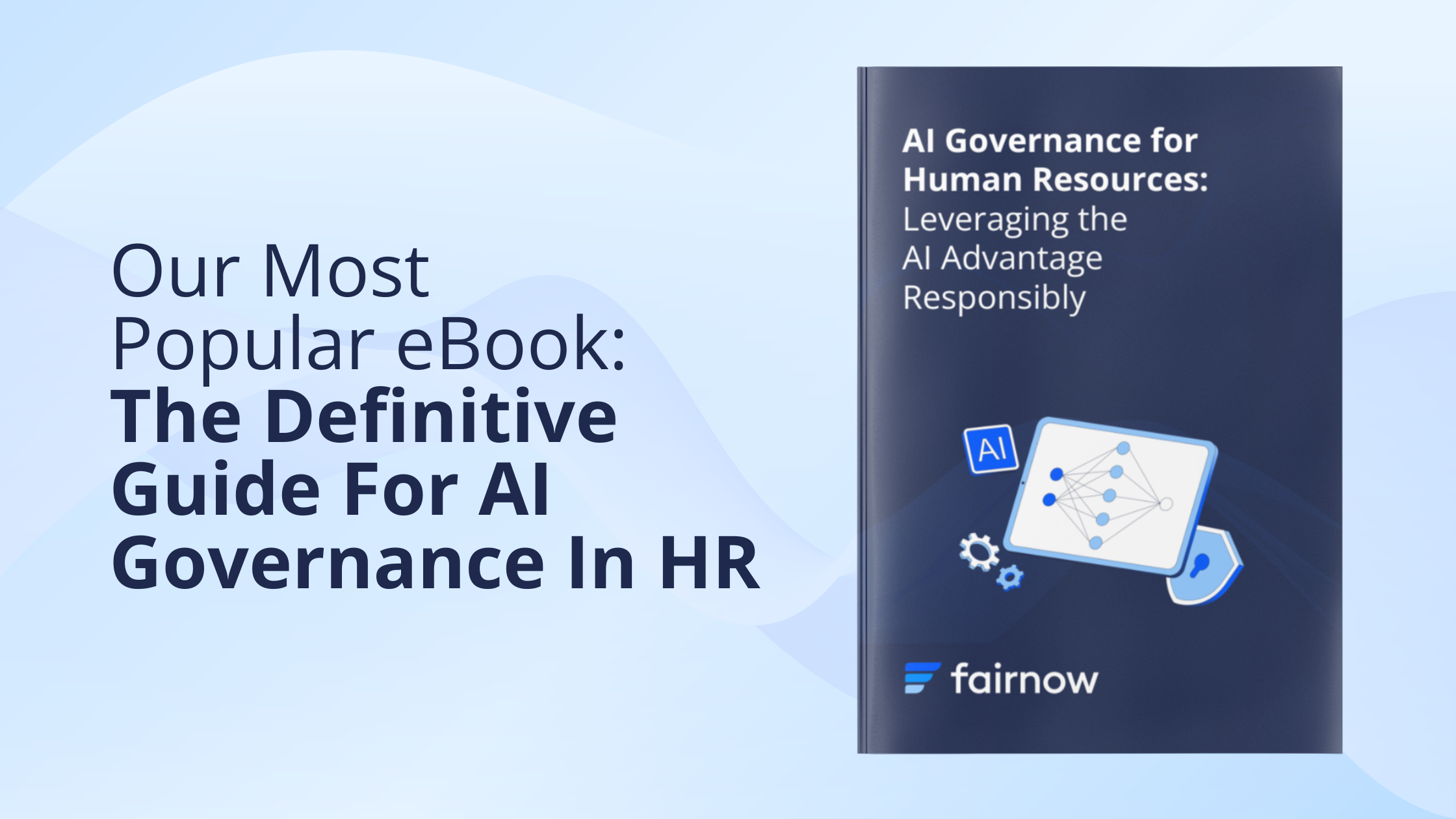Key Takeaways
- AI governance is essential for organizations. It ensures effective management of AI risks, safe deployment, and regulatory compliance.
- Best practices for effective AI governance exist. Following established guidelines strengthens the foundation of an AI governance program.
- Implementing AI governance involves four key steps: defining the program’s purpose, establishing clear roles and responsibilities, building comprehensive policies and procedures, and educating and training stakeholders.
- AI governance platforms like FairNow help streamline AI governance processes. These tools can simplify the management of governance tasks, ensure compliance, and automate documentation.
What is AI governance, and why does it matter?
AI is predicted to drive $2.6 – 4.4 trillion in value to the global economy annually. However, these new capabilities come with significant risks.
Common risks in AI tools include model errors that produce incorrect, incomplete, or misleading outputs; bias, where AI generates inequitable content; data privacy concerns stemming from leakage or use of personal data without consent; security gaps that can create broader system vulnerabilities; and safety challenges associated with toxic or harmful outputs. Uncertainty around these risks has led many companies to hesitate in fully adopting AI.
AI governance programs are designed to help businesses identify risks associated with their AI so that they can accelerate their journeys towards responsible AI adoption. An AI governance program is the mechanism by which an organization defines what risks matter and takes action to identify, mitigate, and monitor those risks within its AI models and tools.
Setting up an AI governance program can help organizations safely design and deploy AI, identify, manage, and mitigate risks as they arise, and stay compliant with laws and regulations.
Step 1: Define the Aims of the AI Governance Program
AI governance is most effective when it is grounded with a clear mandate, scope, intent, and guiding principles. Establishing an AI governance charter is critical to communicate activities to senior leadership, as well as to individuals who may have active responsibilities within the governance program.
An AI Governance charter should include the following:
- Intent: the mission and mandate of the program
- Scope: organizations, processes, and activities covered
- Definitions: standardized terms to drive a common organizational understanding
- AI Usage Principles: defined statement of intent around which AI usages are permitted, prohibited, or permitted pending closer review
Step 2: Establish Roles and Responsibilities
A well-defined and effective AI governance program will identify which individuals are engaged in leadership and governance activities. It will ensure those individuals are informed, empowered to make decisions, and accountable for outcomes.
AI governance structures can vary from organization to organization based on existing roles and accountabilities. However, despite these differences, high-functioning AI governance programs share common best practices.
Leadership
AI Governance is most effective when organized from the top. Programs strongly benefit from centralization and standardization. Typical AI governance structures will include a Head of AI Governance or equivalent role and a Governance Board.
- The Head of AI Governance is responsible for ensuring the AI Governance program is executed to intent. They are expected to have foundational knowledge of AI systems and authority to perform required duties.
- Members of an AI Governance Board are responsible for providing relevant cross-functional expertise to support the management of AI risk. Since AI risks affect data, privacy, technology, law, and business functions, a diverse Governance Board with varied skills and experiences is best positioned to ensure comprehensive and effective outcomes.
Best Practice Tip: establishing a governance structure can be organizationally challenging and taxing. Leveraging an existing governance channel can build and capitalize upon adjacent expertise while minimizing upfront costs.
Day-to-Day Stakeholders
While AI Governance leadership sets intent and ensures overall program effectiveness, multiple stakeholders are engaged in the day-to-day activities to ensure that risk from the AI that they adopt is being managed effectively. These stakeholders include:
Application Owners
Individuals who have developed (in-house) or procured (third party) AI on behalf of their organizations and who are accountable for conducting a review of their AI and identifying and managing the associated risks. These individuals typically have a degree of technical expertise and a high degree of familiarity with the application.
Accountabilities include:
- Inventorying their AI within a central database
- Identifying the risks of their AI
- Conducting model-specific activities required to be in compliance
- Maintaining required technical, overview, and usage documentation
To ensure compliance, application owners must conduct all of these activities for each of the AI applications that they manage. This can become a time-consuming task, but an AI Governance platform like FairNowcan help streamline and automate much of this work.
Application Reviewers
These individuals (who may also be called model validators) typically have a technical, risk, or legal background and are expected to provide independent review of the AI application at critical junctures, including before an application is deployed and during regular monitoring.
It is important that the reviewer(s) are separate individuals who do not have a stake in the business outcome of the application so that they can be objective in their assessment. While all applications should be independently reviewed before deployment and on a set cadence, the level and rigor of review will be dependent on the risk level of the application and alignment with laws and regulations.
Accountable Executives
These individuals are leaders, typically within the business, who are ultimately responsible for signing off on risks that have been identified by the Application Owners and Application Reviewers.
They are typically senior and have overall responsibility and approval authority for outcomes of the particular AI application that they are reviewing. Accountable Executives should be kept informed of monitoring status and risks in the same way that they might regularly review other KPIs and other results for their organization.
Step 3: Build Policies and Procedures
AI is a complex technology with varied applications and risks. Organizations should establish AI-specific policies and procedures to answer key organizational questions and ensure effective governance. These documents will relate to and share some common features with Data Privacy policies and procedures but should remain distinct given the unique facets of managing risk for AI.
Ultimately, documentation should be developed and designed in line with an organization’s existing policy management structures; as a best practice, organizations should – at a minimum – consider the following sets of documents:
Overall AI Policy
This should include definitions, scope, ethical AI principles, organizational stance and risk appetite, prohibited usages, and governance intent. The overall AI policy may also include a set of regulations or standards that the organization is seeking to maintain compliance with.
AI Principles Document
This document should align with the organization’s overall AI policy but should be shorter and designed in a way that could potentially be public-facing or shared with external stakeholders.
The intent of this document is to clarify the organization’s stance on AI adoption and approaches to maintaining ethical standards. It may help customers, the community, or partners get comfortable with an organization’s AI usage, especially when shared in conjunction with an organization’s disclosures about its AI use (required for some laws).
AI Procedures
An organization should consider a series of procedures and standard documents to clarify the more detailed and specific activities required for AI governance. Procedure documents should cover execution details around the organization’s 1) governance program and review processes, 2) approach to developing and deploying AI, 3) appropriate usages of AI (and a view of usages that are prohibited), 4) Procurement principles and AI third-party risk management activities, and 5) a detailed view of the organization’s risk framework and risk leveling approaches.
Step 4: Educate and Train Stakeholders
A number of stakeholders are engaged in the end-to-end lifecycle of an AI application. These include individuals who have a key role in managing and monitoring AI risk, as well as individuals who might be end-consumers or impacted populations. Individuals in an organization who build, validate, use, or are impacted by AI outcomes should have a foundational understanding of AI and its implications.
Foundational AI Literacy
Populations who are impacted by AI should be aware of how AI is defined, the basic functionality for different types of models, and potential implications. This may include internal employees who might be impacted by the models being used, as well as external customers. In this vein, multiple regulations across the globe that have recently come into effect – such as the EU AI Act, Colorado AI Act (SB 205), Utah AI Policy, and New York City LL 144 – require that organizations that deploy AI provide disclosures to impacted populations. Many set expectations for transparency and consent for the usage of AI.
AI Usage Guidelines
Employees who might be using an AI application to complete work or on behalf of the company should be aware of the risks associated with AI usage and how they should design their engagement with AI to ensure outputs are low risk and high quality. They should also be aware of what risks to look for when adopting and leveraging AI, as multiple regulations – including the Colorado AI Act (SB 205), the Utah AI Policy, and the EU AI Act – set explicit requirements and limitations around AI deployment.
AI Design Best Practices
Builders and procurers of AI should be educated and aware of the best-practice principles around designing and integrating AI systems, particularly for Generative AI models which have been relatively newer, and come with a series of additional risk factors. They should be aware of steps that can be taken from the perspective of data cleaning and parsing, algorithm development, and post-deployment prompt adjustments and blocks (e.g., translating user prompts into content that will be better suited for GenAI model interpretation).
In particular, third-party risk management teams, procurement, or anyone looking to adopt AI provided by another company should be aware of the questions to ask AI providers (View our “12 Essential Questions To Ask Your AI Vendors” guide here).
AI System Best Practices
Application reviewers and leaders within the AI governance space should be aware of implications of risks of individual AI systems on systemic, enterprise-wide challenges. They should understand the requirements laid out by applicable global regulations and standards for building and managing a governance system that oversees the deployment of individual AI applications and particular compliance areas to watch for to ensure that the enterprise avoids litigation and other challenges.
We’ve Built A Platform To Help
Implementing an AI governance program is essential for navigating the complexities and risks associated with AI.
From defining your governance structure to establishing clear roles and responsibilities, each step is critical to ensure your organization is well-prepared to adopt AI safely.
At FairNow, we provide the exact tools needed to streamline this process, helping you manage robust policies and procedures at scale.
Our AI governance platform supports you in managing responsibilities, ensuring compliance, and fostering trust in your AI initiatives.
Ready to start building your AI governance program? Request a demo of FairNow and see how we can make governance less cumbersome.
Keep Learning




